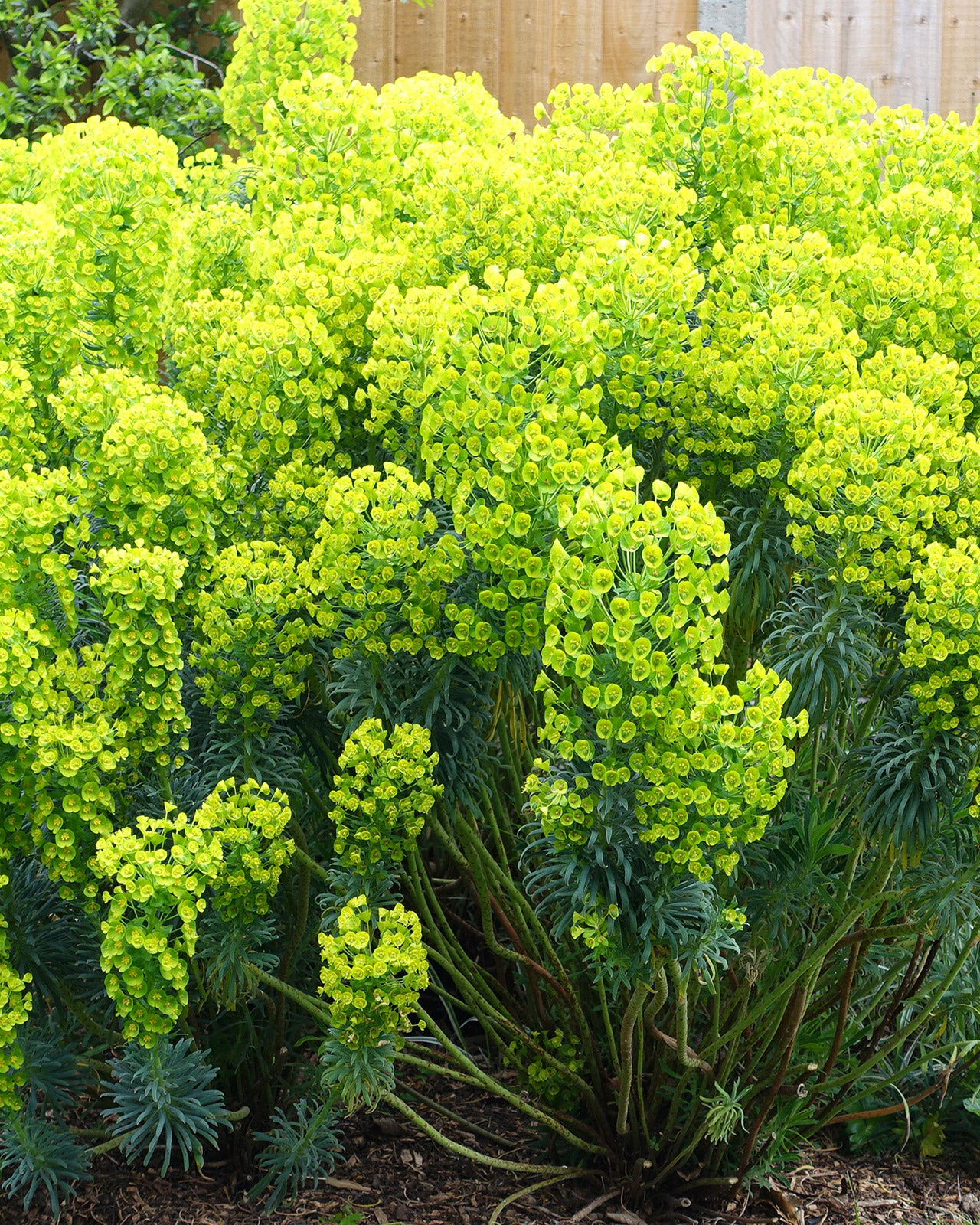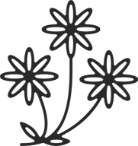
-
Why we like this plant
Euphorbia characias subsp. wulfenii is an excellent choice for adding bold structure and year-round interest to the garden. Its striking lime-green flowers, evergreen foliage, and drought resistance make it a standout in Mediterranean and dry garden schemes, while its wildlife-friendly nature attracts beneficial pollinators.
-
About this plant
An eye-catching and architectural plant, Euphorbia characias subsp. wulfenii is renowned for its towering, lime-green flower spikes that bloom in early spring and persist well into summer. Its narrow, silvery-blue foliage forms a bushy, evergreen mound, providing year-round interest. This drought-tolerant and low-maintenance spurge thrives in dry, well-drained soils, making it ideal for Mediterranean-style gardens, gravel plantings, and sunny borders. Loved by pollinators but resistant to deer and rabbits, it is a superb choice for both contemporary and wildlife-friendly gardens.
-
Key features
- Tall, lime-green flower spikes from early spring to summer
- Evergreen silvery-blue foliage for year-round interest
- Highly drought-tolerant and thrives in poor soils
- Attracts bees and beneficial insects
- Deer and rabbit resistant
-

Height and
spread -

Growth
habitUpright, bushy, and architectural
-

Moisture
Drought-tolerant once established; prefers dry to moderately moist soil
-

Position in
the GardenSunny borders, Mediterranean gardens, gravel plantings, and wildlife gardens
Planting guide
- Space plants about 60-90cm apart to allow for growth
- Thrives in well-drained, sandy, or rocky soil
- Perfect for gravel gardens, Mediterranean borders, and wildlife-friendly plantings
Care tips
- Plant in well-drained soil in full sun
- Cut back flowered stems after blooming to encourage fresh growth
- Wear gloves when handling, as the milky sap can be an irritant
- Avoid excessive fertiliser, as it thrives in poor soils
Winter care
- Evergreen, requiring minimal winter care
- Mulch lightly in colder regions for extra root protection
- Trim back any damaged foliage in early spring










